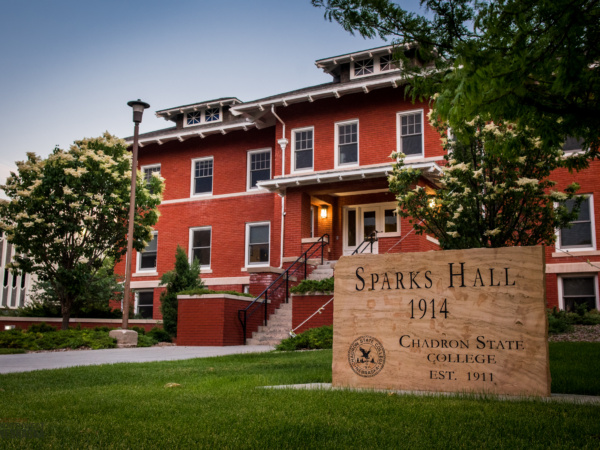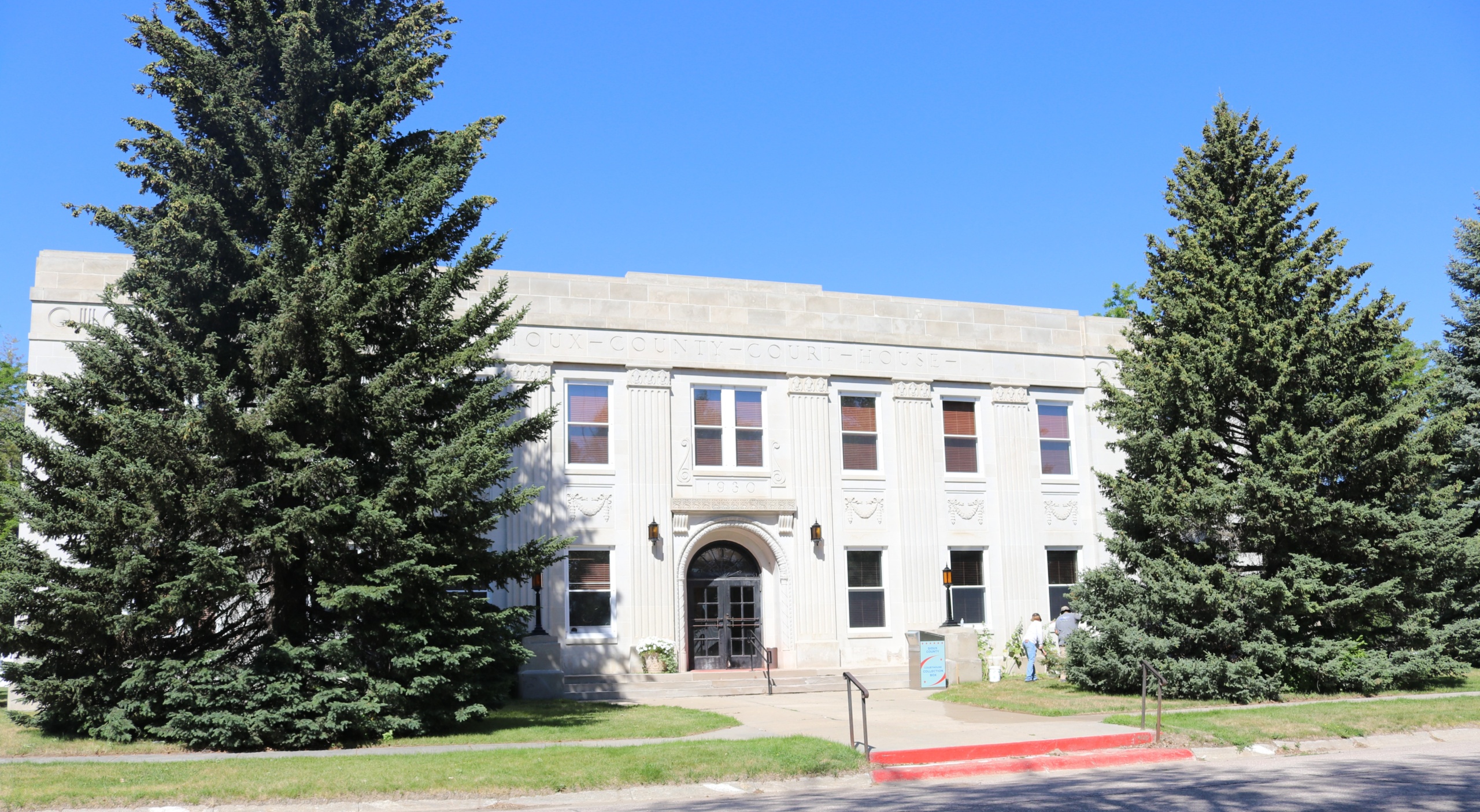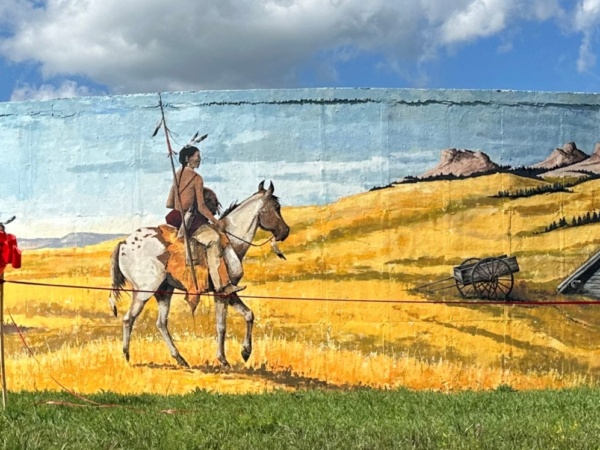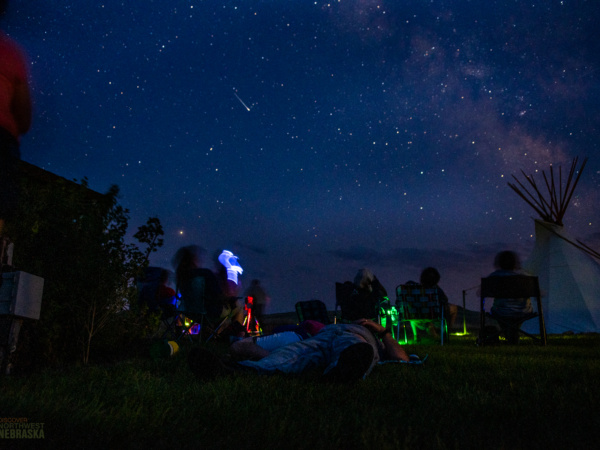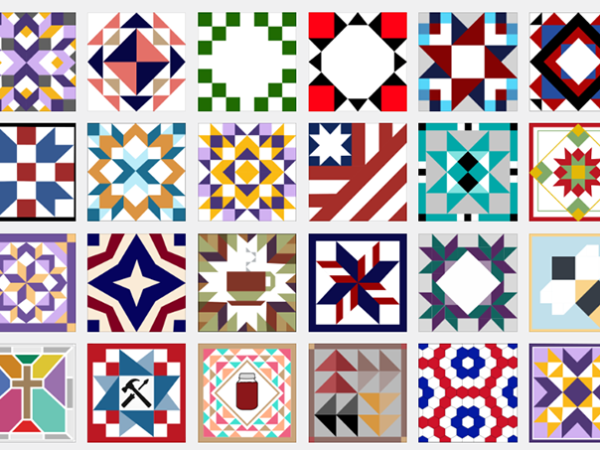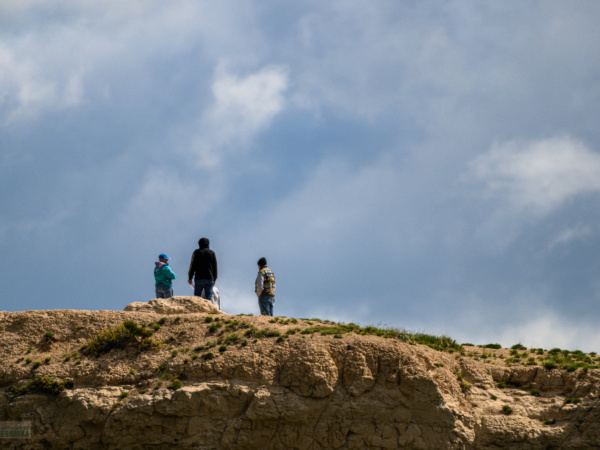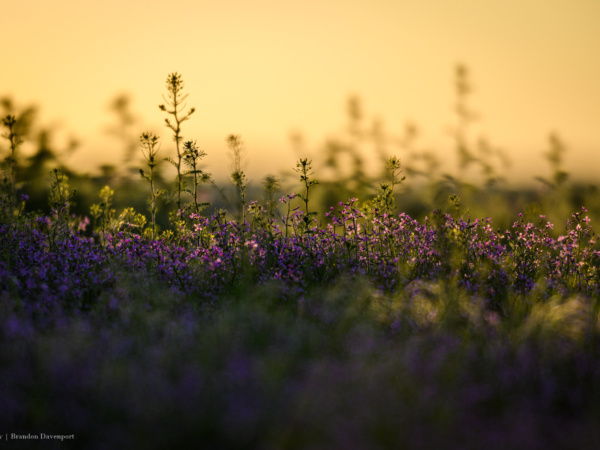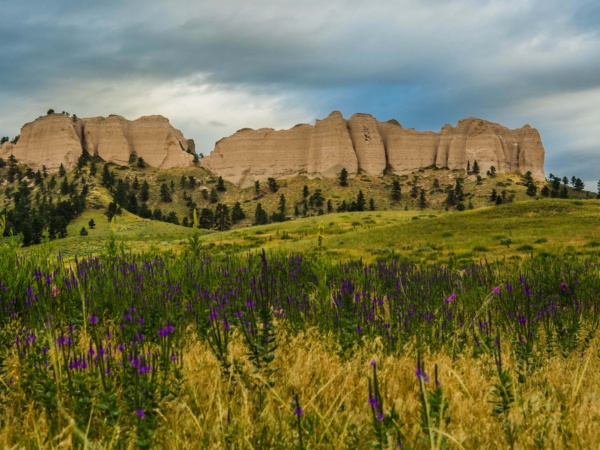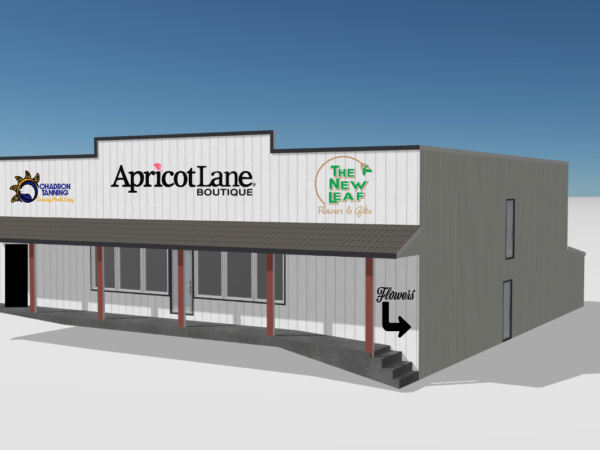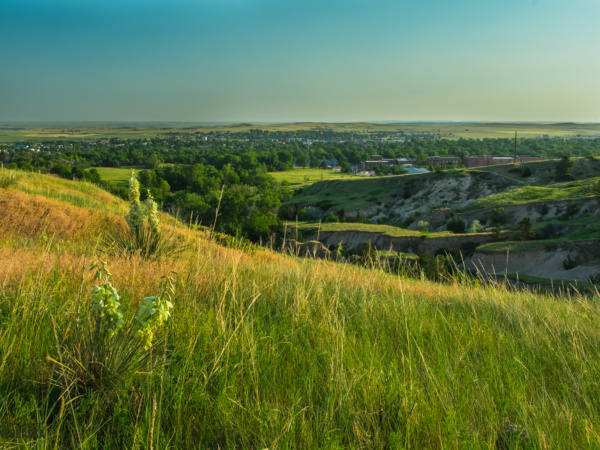
Representatives of Chadron State College and the Chadron State Foundation accept a sculpture created by William Artis, “Madonna & Child,” donated by Cathy Clary Monday, Aug. 21, 2023. From left, Chadron State Foundation CEO Ben Watson, Cathy Clary, Dean of Liberal Arts Jim Margetts, and President Ron K. Patterson. Artis, a renowned artist and teacher, taught at CSC from 1954 to 1964. Morse Clary, who was one of his students and would go on to have a career himself in art, purchased the bust, “Madonna & Child,” from a fellow student. Following Morse’s death, his wife, Cathy, honored her late husband’s wishes by donating the piece to the college. (Photo by Alex Helmbrecht)
Artis sculpture donated to CSC

Tour Showcases 1% for Public Art
By Kerri Rempp
Discover Northwest Nebraska
In addition to CSC’s permanent collection of artwork, the campus is also home to a wide selection of artwork created through the state’s 1% for Public Art.
Chadron State College is home to 44 pieces of the Nebraska 1% For Art Collection. The program, instituted in 1978, requires that 1% of the cost of state-funded construction projects be dedicated to commissioning works of public art. Since its inception, more than $5 million in artwork has been acquired for state buildings, state colleges and the University of Nebraska system. The public art must be displayed in buildings that allow public access, and an art selection committee is established for each project.
Chadron State College’s 1% collection is distributed throughout campus and can be viewed at Miller Hall, the Nelson Physical Activity Center, Memorial Hall, Old Admin, Sparks Hall, Burkhiser Building, the Chicoine Center and the Rangeland Complex. However, please note that CSC periodically relocates the artwork for re-hanging, re-framing or cleaning.
Learn more about the artwork in CSC’s 1% collection and other items of interest on campus in Discover Northwest Nebraska’s Sole to Soul walking tour of the college.
By TENA L. COOK,
CSC MARKETING COORDINATOR
Chadron State College recently received a sculpture created by the late William Artis, who taught art at CSC from 1954 to 1964, thanks to Cathy Clary, of Pasco, Washington, who was honoring her late husband’s wishes. Clary delivered the clay bust to CSC officials in late August.
Clary, who works at Columbia Basin College, made the donation to fulfill the wishes of her husband, CSC alum Morse Clary.
The piece, approximately 24 inches tall and 12 inches wide, is titled Madonna and Child.
“It was so nice to deliver it in person. Everyone was so warm and welcoming,” she said. “Morse always spoke highly of CSC. I’m happy the sculpture has a good home and hope it inspires future students. More people will be able to see it and appreciate it this way. Morse reached so many students, just like William Artis did. It is kind of a beautiful full-circle connection that we could bring that piece back and have it represent his legacy.”
Clary said her husband spoke highly of Artis’ craftsmanship and was greatly influenced by him.
“William Artis taught his students they could be respected as artists if they followed the tenets of good craftsmanship. He was a fine example of an artist who showed the discipline needed for a creative life. He was a teacher and a wonderful mentor,” Clary said.
Provenance provided by Clary states the sculpture was created by Artis in 1960 or 1961 and was influenced by his experiences teaching on the Native American reservation at Pine Ridge, South Dakota.
Morse Clary purchased the sculpture from Robert Yost, also a CSC student, in 1968. Yost, the retired director of the Mohavi Museum of History and Art, gave several Artis pieces to the College before his death in 2022 in Kingman, Arizona, according to Chadron State Foundation CEO Ben Watson.
CSC Art Professor Laura Bentz said the donation of the clay sculpture by William Artis will be an excellent addition to the permanent collection that contains about a dozen works by the Harlem Renaissance artist.
“Having multiple pieces on display by such a prominent artist allows the students to see how an artist works with a particular subject matter using a variety of materials, and how the artist’s treatment of the subject matter changes or evolves,” Bentz said.
Morse Clary’s formative years were spent in North Platte, Nebraska, exploring the land around the river and discovering fossils. In a memorial video, he said there was a beauty and a tension in the way the fossils were embedded in the clay together. Clary said his early interactions with nature weaved their way into his view of the world and the 300 wooden book sculptures he created during the height of his career.
After serving in the U.S. Army, Morse Clary returned to CSC to earn a teaching certificate in 1966.
He taught for 32 years including high school art and theatre in Crofton, Nebraska, and art at the former Hiram Scott College in Scottsbluff where he met his wife. He earned a Master of Fine Arts in Sculpture and Printmaking from the University of Idaho and continued his teaching career at Marietta College in Ohio and Columbia Basin College in Pasco, Washington.
